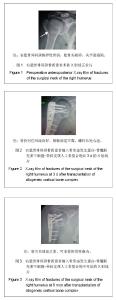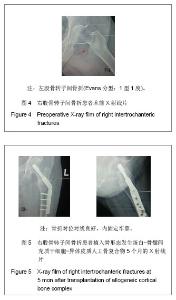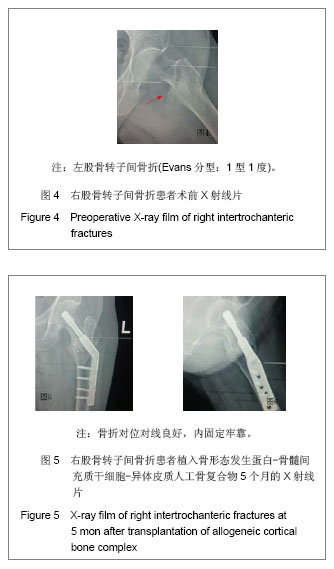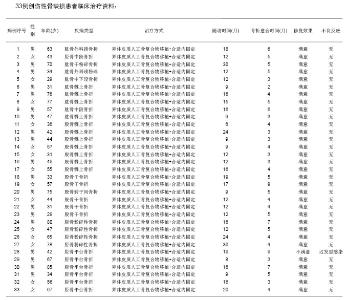| [1]San Julian M,Valenti A. Bone transplant.An Sist Sanit Navar. 2006; 29 Suppl 2:125-136.[2]田长庆,李振宇,周文钰,等.同种异体骨与自体骨混合移植在脊柱融合中的应用[J].中国修复重建外科杂志,2009,23(5):517-519.[3]Miura Y,Imagama S,Yoda M,et al.Is local bone viable as asource of bone graft in posterior lumbar interbody fusion.Spine (Phila Pa 1976).2009;28(20):2386-2389.[4]Ebelke DK,Asher MA,Neff JR,et al.Survivorship analysis of VSP spine instrumentation in the treatment of thoracolumbar and lumbar burst fractures.Spine (Phila Pa 1976).2009;16 (8 Suppl):S428-432.[5]Menon DK,Dougall TW,Pool RD,et al.Augmentative Ilizarov external fixation after failure of diaphyseal union with intramedullary nailing.J Orthop Trauma.2012;16:491-497.[6]滕勇,徐建丽,李旭升,等.人骨髓基质干细胞的单细胞克隆培养与鉴定[J].中国组织工程研究,2012,16(10):1742-1747.[7]Mankin HJ,Gebhardt MC,Tomford WW.The use of frozen cadaveric allografts in the management of patients with bone tumors of the extremities.Orthop Clin North Am.1987;18(2): 275-289.[8]Komender J,Malczewska H,Komender A.The rapeutic effects of transplantation of lyophilized and radiation-sterilized, allogeneic bone. Clin Orthop Relat Res.1991;(272):38-49.[9]朱江涛,卫小春.股骨粗隆间骨折分型[J].实用骨科杂志,2007, 13(7):410-413[10]Lacerda SA,Lanzoni JF,Bombonato-Prado KF,et al. Osteogenic potential of autogenous bone associated with bone marrow osteoblastic cells in bony defects: a histomorphometric study.Implant Dent.2009;18(6):521-529.[11]Veis A,Kougias K,Tsirlis A,et al.Evaluation of the osteogenic potential in experimental defects, with and without bone marrow, in the rabbit tibia: a pilot study.Int J Oral Maxillofac Implants.2009;24(6):1054-1060.[12]Erggelet C,Kreuz PC,Mrosek EH,et al.Autologous chondrocyte implantation versus ACI using 3D-bioresorbable graft for the treatment of large full-thickness cartilage lesions of the knee.Arch Orthop Trauma Surg.2010;130(8):957-964.[13]Veis A,Kougias K,Tsirlis A,et al.Evaluation of the osteogenic potential in experimental defects, with and without bone marrow, in the rabbit tibia: a pilot study.Int J Oral Maxillofac Implants.2009;24(6):1054-1060.[14]Matsuo A,Chiba H,Takahashi H,et al.Clinical application of a custom-made bioresorbable raw particulate hydroxyapatite/ poly-L-lactide mesh tray for mandibular reconstruction. Odontology. 2010;98(1):85-88.[15]王斌,贺西京,历强.嗅鞘细胞联合甲基强的松龙对大鼠脊髓损伤区神经中丝表达的影响[J].中华创伤杂志,2011,27(4):370-374.[16]王斌,贺西京,历强,等.不同纯化方法体外培养人胚嗅球嗅鞘细胞[J].四川大学学报:医学版,2008,39(6):1023-1026.[17]Niemeyer P,Schanberger TS,Hahn J,et al.Xenogenic transplantation of human mesenchymal stem cells in a critical size defect of the sheep tibia for bone regeneration.Tissue Eng Part A.2010;16(1):33-43.[18]Kanczler JM,Ginty PJ,White L,et al.The effect of the delivery of vascular endothelial growth factor and bone morphogenic protein-2 to osteoprogenitor cell populations on bone formation. Biomaterials.2010;31(6):1242-1250.[19]Zhu L,Chuanchang D,Wei L,et al.Enhanced healing of goat femur-defect using BMP7 gene-modified BMSCs and load-bearing tissue-engineered bone. J Orthop Res. 2010; 28(3):412-418.[20]孔志刚,田德虎,于海泉,等.同种异体松质骨复合自体红骨髓移植治疗创伤性骨缺损[J].中国修复重建外科杂志,2008,22(10): 1251-1254. |





